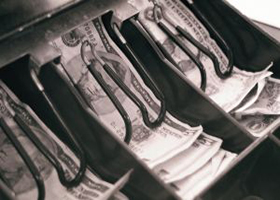

“Active currency is a legitimate source of return and that’s based on theory, empirical evidence and our experience managing currencies over the better part of the past two decades,” argues Kyle Concannon, investment strategist, dynamic allocation strategies team at William Blair.
“Investors in foreign-denominated assets cannot avoid exchange rates and it’s better to be conscious or deliberate about that decision rather than to be passive about it,” he says.
On the other hand, there is strong evidence that fundamental valuation techniques also apply to currencies and that they are mean reverting over time. Currencies also exhibit low and sometimes negative correlations to other assets (awkwardly, if you’re investing in a rising market with a plummeting currency) and offer a risk profile between stocks and bonds.
“So, in that sense, active currency clicks the boxes of efficacy, opportunity and diversification,” Concannon says. “If you hedge that exposure, you take exchange rate fluctuations out of the equation but there’s still a cost or gain from hedging and that’s the interest rate differential between the two currencies,” he adds. You may also miss out if your home currency depreciates relative to the foreign currencies.
Or, you can leave that exposure unhedged and expose those returns to exchange rate fluctuations. In neither case are you receiving the local return; in both cases, you’re adding or receiving something on top of that local return. But, fundamental values can be derived to mitigate currency swings.
Just as stock prices revert to the value of their discounted cash ows, in exchange rates, there’s a similar equilibrating force and that’s relative purchasing power.
“If what a Brazilian real can buy in Brazil gets way out of whack with what it can buy in the United States, then there’s an equilibrating force there — an economic incentive to step in and take advantage of that dislocation,” he explains.
For Concannon, the key metric is relative purchasing power: “Not the nominal exchange rate but the exchange rate with relative in ation in the two countries. This normalizes exchange rates across our investment universe to give us the real exchange rate.”
Historically, some currencies have reverted eight or nine times to their fair value over the past 30 years, which, Concannon says, is about triple what equity markets have done. In studying the half-life of these reversions (the time required to get halfway to fair value), he notes “in every time horizon, exchange rates had a greater probability of reverting to their fundamental value than did equities and bonds.”
It would appear that currency mean reversion is both real and actionable. “Using purchasing power parity as a signal: Is that signal any good?” he asks. “Yes, it’s quicker and stronger than it is for equities and bonds so there’s actually a more robust fundamental value in exchange rates than there is for equities and bonds.”
